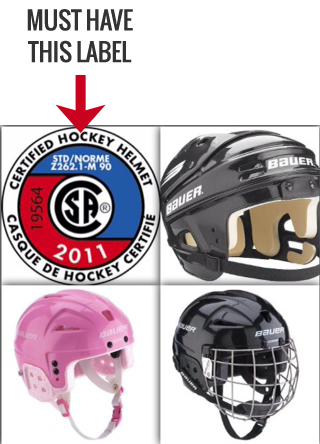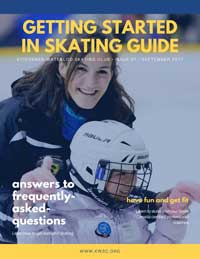SKATING EQUIPMENT INFORMATION
SKATES
Properly fitted skates are essential. Skates must not be sized too large because loose-fitting skates do not support the foot and ankle. Figure skates and hockey skates are both acceptable for Parent & Tot, CanSkate, and Community Learn-to-Skate programs; the choice should be made depending on your future skating plans. For example, if you might continue on in figure skating, it is preferable to wear figure skates from the start. If you choose figure skates, the toe pick should be intact (not ground off).
Buying new or used skates: You can find information for new or used skates here. Please remember, this is only an introductory guide to buying skates, KWSC has no affiliation with outlined stores.
Skates must be properly sized, sharpened, and tied snugly.
SKATE SHARPENING
Blades should be sharpened when they lose their ability to grip the ice and slide sideways too easily. The time between sharpenings varies considerably depending on the quality of the blade, how you skate, and how you care for your blades. For example, walking on concrete or metal without blade guards will make it necessary to sharpen your blades immediately. But as a general guide properly maintained high-quality figure skate blades should be sharpened after about 20-30 hours of use. Blades made of softer steel likely require more frequent sharpening.
Figure skate blades should only be sharpened by a skilled person who understands the special requirements of figure skate blades.
HOW TO TIE YOUR SKATES
Begin by loosening laces halfway down so your child’s foot can slide in easily. The heel should sit flat and toes shouldn’t touch the end of the skate.
Starting at the toe, pull each crisscrossed lace so the skate feels snug, but your child can still wiggle their toes. Hockey skates can be looser at the toes, but figure skates should be snug throughout.
For hockey skates, lace up to the top holes and tie with a bow. For figure skates, cross laces and loop around the eyelets, pulling as you go. Tie at the top.
Have your child stand, then check to make sure that ankles are well supported. Blades should not be angled.

HELMET
A properly fitted CSA-approved hockey helmet is mandatory for all Learn-to-Skate participants, including Adult skaters in Parent & Tot and Adult CanSkate. Helmets designed for other activities - such as bicycle, skateboard or ski helmets - are not permitted. Our helmet policy can be found here.

KWSC How to Recognize a Concussion
WARM CLOTHING
All skaters are encouraged to wear gloves or mittens, as well as warm and comfortable clothing that allows them to move freely. Clothing should be warm, but skaters should avoid overdressing to prevent overheating as a result of the physical activity involved in learning to skate.






